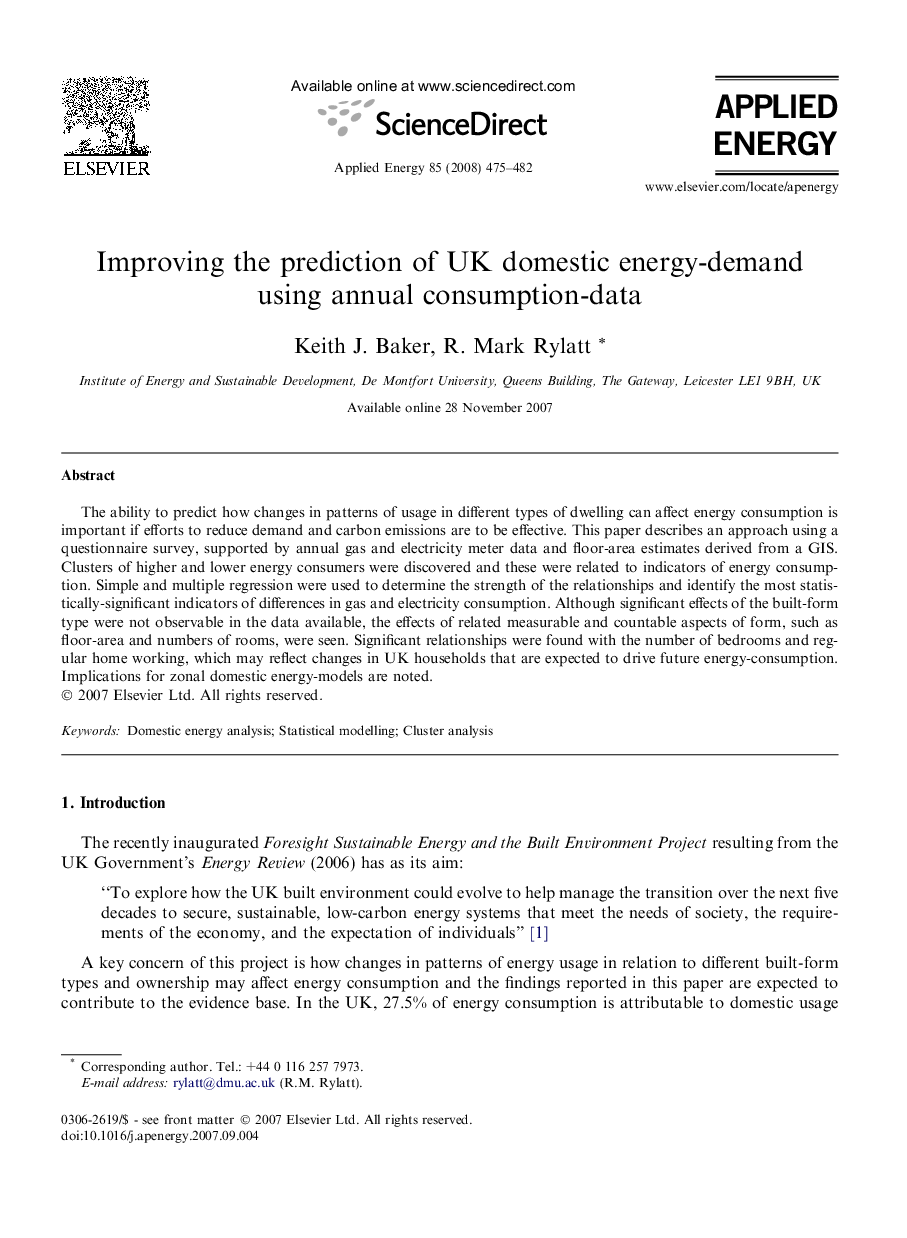| Article ID | Journal | Published Year | Pages | File Type |
|---|---|---|---|---|
| 245109 | Applied Energy | 2008 | 8 Pages |
The ability to predict how changes in patterns of usage in different types of dwelling can affect energy consumption is important if efforts to reduce demand and carbon emissions are to be effective. This paper describes an approach using a questionnaire survey, supported by annual gas and electricity meter data and floor-area estimates derived from a GIS. Clusters of higher and lower energy consumers were discovered and these were related to indicators of energy consumption. Simple and multiple regression were used to determine the strength of the relationships and identify the most statistically-significant indicators of differences in gas and electricity consumption. Although significant effects of the built-form type were not observable in the data available, the effects of related measurable and countable aspects of form, such as floor-area and numbers of rooms, were seen. Significant relationships were found with the number of bedrooms and regular home working, which may reflect changes in UK households that are expected to drive future energy-consumption. Implications for zonal domestic energy-models are noted.
